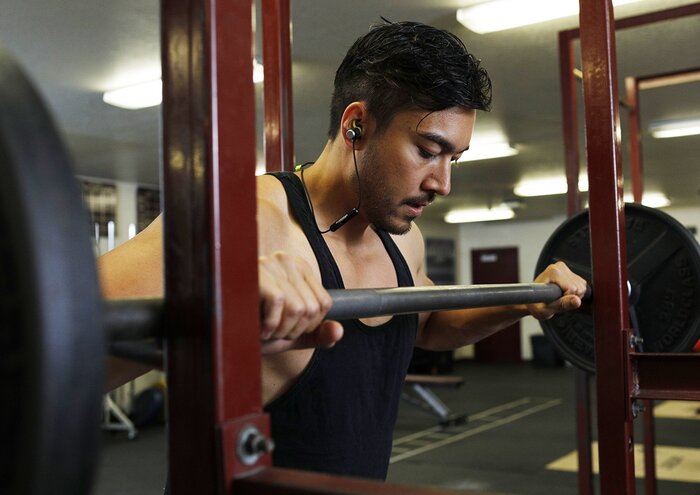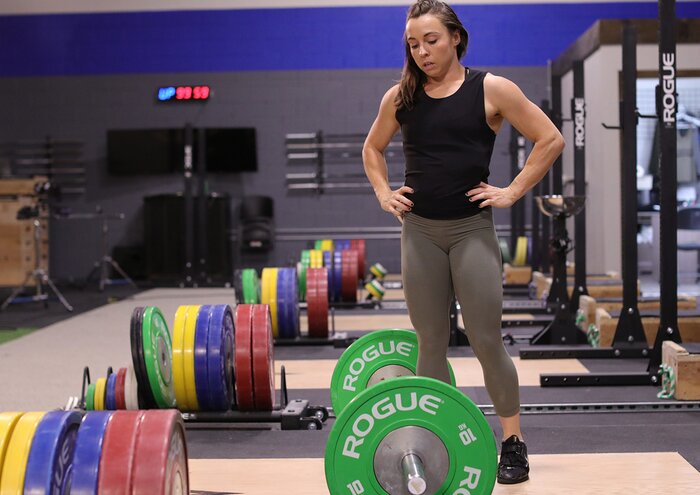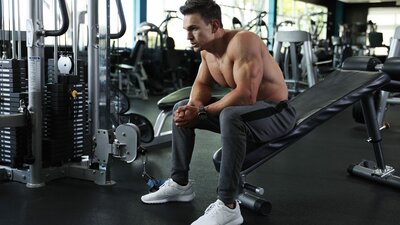Post-Workout Recovery | Rest Between Workouts | Active Recovery | Rest Between Sets
I've trained and pushed myself hard over the years, and I've written programs for thousands of clients. If I've learned one thing, it's this: It's not how hard you can exercise, but what you can recover from that matters.
What Is Recovery and How Do You Monitor It?
Recovery is not just about performance in the moment; it's also your body's ability to overcome and adapt to stress after exercise or competition.
Lifting weights at the gym stresses your body, which then responds via various mechanisms to restore your body to its preferred "balanced" state. This means you can't just think about recovery at the muscular level, you have to consider what exercise does to the entire body.
Your Muscle-Building System
Muscles need electrical impulses to drive contraction, relying on the nervous system to fire. The nervous system—namely, the autonomic nervous system, or ANS—consists of two branches:
- Sympathetic nervous system, or SNS, is the "fight or flight" branch. If you want to run fast, jump high, or lift heavy, you activate your SNS to help you do it.
- Parasympathetic nervous system, or PNS, is the "rest and digest" branch. If you want to chill out, relax, and recover, you need to activate the PNS.
When you want to train hard, you need to be able to crank up your SNS and push weight. But when it's time to relax and recover with deep, restful sleep, you need your PNS working at a high level.
Don't let stress throw off your gains. Find the right products to help you get to sleep faster, stay asleep longer, and combat stress.*
You must gauge the total stress of each workout so you can balance your ANS—and your recovery—accordingly.
Track How Each Workout Feels
One method you can use is rate of perceived exertion, or RPE. The RPE gives you insight into not only how you're feeling that day but also how you're recovering from your sessions on average.

Use a 1-10 scale to rate how difficult a session is, with 10 being a grueling workout, 9 being a really tough workout, 8 being a challenging workout, and so on. While it's not perfect, this helps you assess how you feel on any given day, regardless of how much weight you're lifting, and whether or not you need more time off between workouts.
Calculate More Than Just Volume
Another way to gauge how hard you trained is to actually calculate the total stress of the workout. Most people are familiar with total volume (sets x reps), but a critical piece of the puzzle is the load, which dictates the intensity. Instead of sets x reps, the new formula is:
- sets x reps x load
Using this equation, here's how two different workouts done with the 5x5 scheme would look:
- 5 sets x 5 reps x 200 pounds = 5,000 pounds total workload
- 5 sets x 5 reps x 400 pounds = 10,000 pounds total workload
While each workout contains identical volume (25 reps), adding in the load gives you a much better measure of how challenging the workout actually is. Note that as lifters mature—either in age or in experience—they usually find that they need more intensity to force the body to adapt.
Other Factors That Affect Recovery
As we age, stress takes a bigger toll, and we don't recover as fast as we once did. A 20-year-old who only worries about going to class, getting to the gym five times per week, and recovering from extracurricular activities can take a lot of stress. By contrast, a 50-year-old with teenage children at home, a full-time job, and money issues will need more recovery time.
Here are three major factors to consider when designing a weekly schedule:
- Age and recovery ability.
- Primary training goal (e.g., strength focused vs. physique focused).
- Other stressors in life.
For most lifters, 2-4 sessions per week works well. Younger lifters can usually handle more workouts, while older lifters should stick with fewer.
Get healthy muscle recovery after every workout so you can get back to the gym and keep making gains.
Building a Better Recovery Template
Once you have an idea of how hard a given training session is and how many sessions you plan to complete per week, you can finally plan recovery time between workouts.
When you're young, it's easier to go back-to-back days. As you age, you will typically need more time off between sessions. Yes, there are exceptions, and some people can train every day. By and large, however, most people who train hard 3-4 times per week do better taking a day off between workouts.

Strength-Focused Recovery
If you're building strength, you can probably only do max effort workouts twice per week. Working at that intensity means you'll need 48-72 hours between sessions to recover. Remember, even if your muscles feel ready, your nervous system needs a break, too.
Having only two high-intensity days doesn't mean you have to take the rest of the week off, though. Whether it's less-intense, volume-focused workouts, recovery workouts, or some other plan, there are still options to get into the gym while you recover.
Physique-Focused Recovery
If you're more focused on physique, follow a traditional bodybuilding-style split where you'll hit maximal intensity on leg day and potentially on your back or chest day. Give yourself a day off after those heavy workouts to ensure that you maximize your ability to recover.
Whichever goal you choose, find a training approach that lets you train hard while still maximizing recovery.


